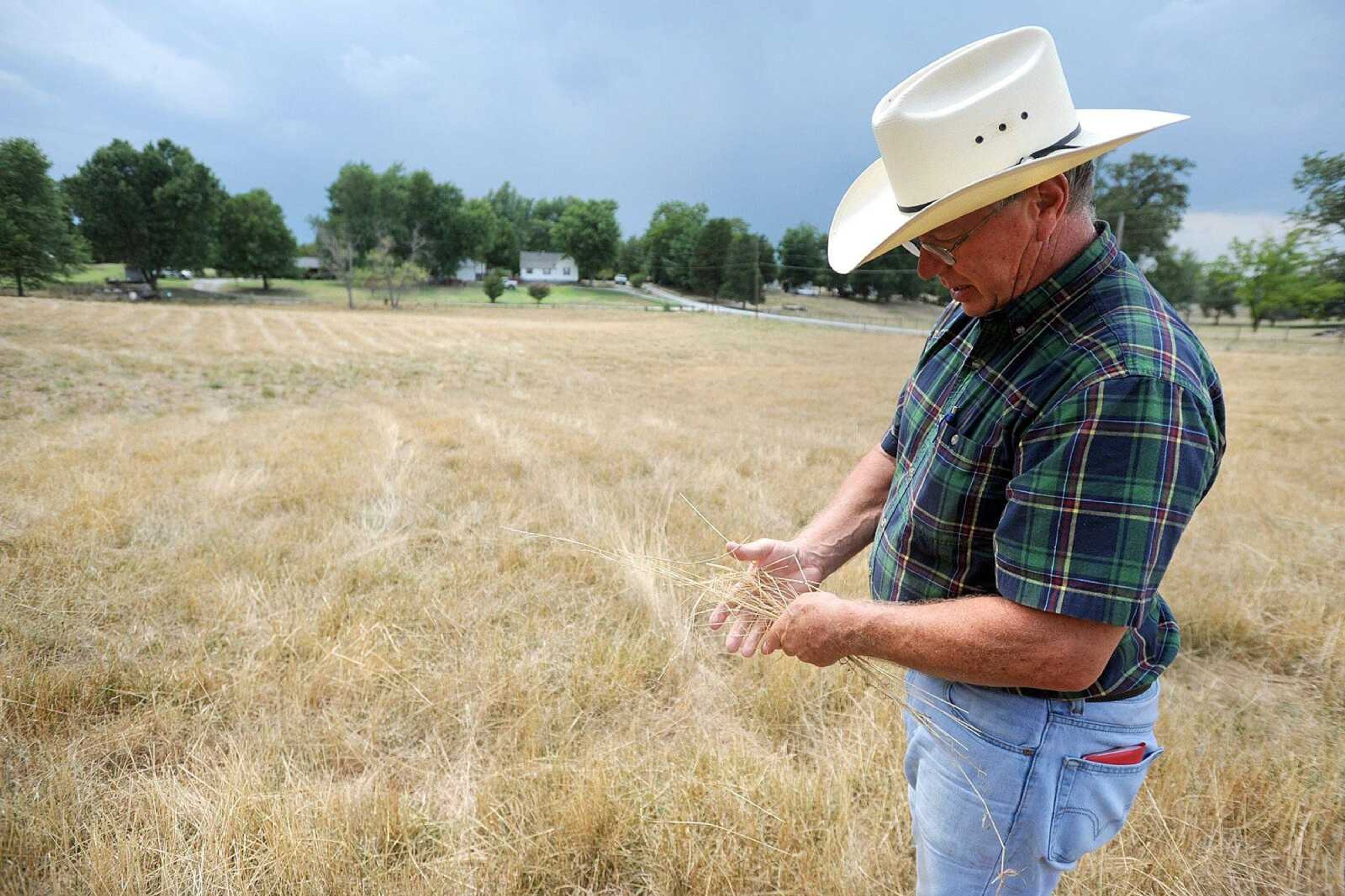Southeast Missouri moves into worst category of drought
Drought has already affected area crops and livestock, and conditions are expected to get worse before they get better. Southeast Missouri, including Scott and Stoddard counties, nearly all of Cape Girardeau County, most of Bollinger County and a small part of Perry County, are now in the most pronounced type of drought, according to the latest U.S. Drought Monitor map released Thursday. Those areas are in the "exceptional" drought category...
Drought has already affected area crops and livestock, and conditions are expected to get worse before they get better.
Southeast Missouri, including Scott and Stoddard counties, nearly all of Cape Girardeau County, most of Bollinger County and a small part of Perry County, are now in the most pronounced type of drought, according to the latest U.S. Drought Monitor map released Thursday. Those areas are in the "exceptional" drought category.
Thursday's report showed the drought's intensity is rapidly increasing, with 20 percent of the nation now in the two worst stages of drought -- up 7 percent from last week.
The National Climatic Data Center considers drought conditions throughout Missouri as "severe" or worse, with more than two-thirds considered "extreme." Just over 8 percent, including local areas, is categorized as "exceptional."
According to the National Weather Service, no Southeast Missouri county has had more than Butler County's 4.78 inches of rain in the past four weeks. Weather service meteorologist Robin Smith said there are no short-term changes coming, with the three-month outlook showing above-average temperatures and below-average precipitation.
"Unless some precipitation comes through, you can expect this to last through October," Smith said. "There just isn't any clear-cut relief in sight."
Some storms did come roll through Southeast Missouri late Thursday. As of 5 p.m., Cape Girardeau received 0.14 inches; however, the National Weather Service rain gauge was down after that.

The drought has caused farmers to find ways to lessen the financial blow, including heavy irrigation. Still, USDA statistics say 61 percent of the corn crop and 58 percent of soybean crop conditions in Southeast Missouri are rated "poor" to "very poor."
River levels are also extremely low. At Cape Girardeau the Mississippi River stood at 9.53 feet Thursday afternoon, about 10 feet above the record low. The river at Memphis is more than 13 feet below normal, and shipping is constrained on the river's lower portion.
Some are labeling this the worst drought they've ever experienced.
"The last time I can remember it being this bad was in 1954. It's looking pretty bleak, to be honest," said Lawson Burgfeld, a Jackson livestock producer. "We had no real spring, and now we have dried-up pastures along with a hay shortage. And that, combined with high corn and grain prices, is giving folks two choices: Spend a lot of money on feed or sell off our cattle."
Mike Geske, a Stoddard County farmer who is on the National Corn Growers Association board, said there have been other droughts in past years that caused difficulty, but never so widespread.
"This is coming down hard on all of us in the agricultural business. We won't know really how bad it's been until harvest, but it's safe to say it won't be pretty," Geske said. "It's having a psychological effect on farmers, too. It's heartbreaking to work all year, only to watch as your crops are destroyed by drought."
Help could be on the way for livestock producers in the form of Rep. Jo Ann Emerson's Emergency Livestock Relief bill. The proposed legislation, introduced in the House of Representatives on Wednesday, aims to renew and expand eligibility for the Livestock Forage Disaster, Livestock Indemnity and Emergency Livestock Assistance programs. Emerson said in a news release announcing the bill that the programs are to address grazing losses and livestock deaths due to drought, as well as losses to producers not covered by other disaster programs.
There is no timetable for passing the legislation, as it still needs a vote of the full House. A similar measure in the Senate, the Wildfire and Drought Relief for Ranchers and Farmers Act, would reauthorize the Emergency Assistance for Livestock, Honeybees, and Farm-Raised Fish Program; the Livestock Forage Disaster Program; and the Livestock Indemnity Program.
Sen. Claire McCaskill put out a news release Thursday saying she supports the legislation. McCaskill also has set up a drought assistance resource on her website, www.mccaskill.senate.gov.
Burgfeld said he thinks the drought's biggest side effects will be felt starting later this year.
"The consumers are really going to feel the cost of drought at the grocery store come winter. We buy so many things that use corn and grain, and small harvests are going to cause costs to skyrocket," Burgfeld said. "One thing I think is being overlooked here is cattle conception rates. They just don't breed in this heat, and in a few months we will probably have alarmingly low numbers of calves being born. That will be tough on the beef market."
The Associated Press contributed to this report.
jsamons@semissourian.com
388-3641
Connect with the Southeast Missourian Newsroom:
For corrections to this story or other insights for the editor, click here. To submit a letter to the editor, click here. To learn about the Southeast Missourian’s AI Policy, click here.











